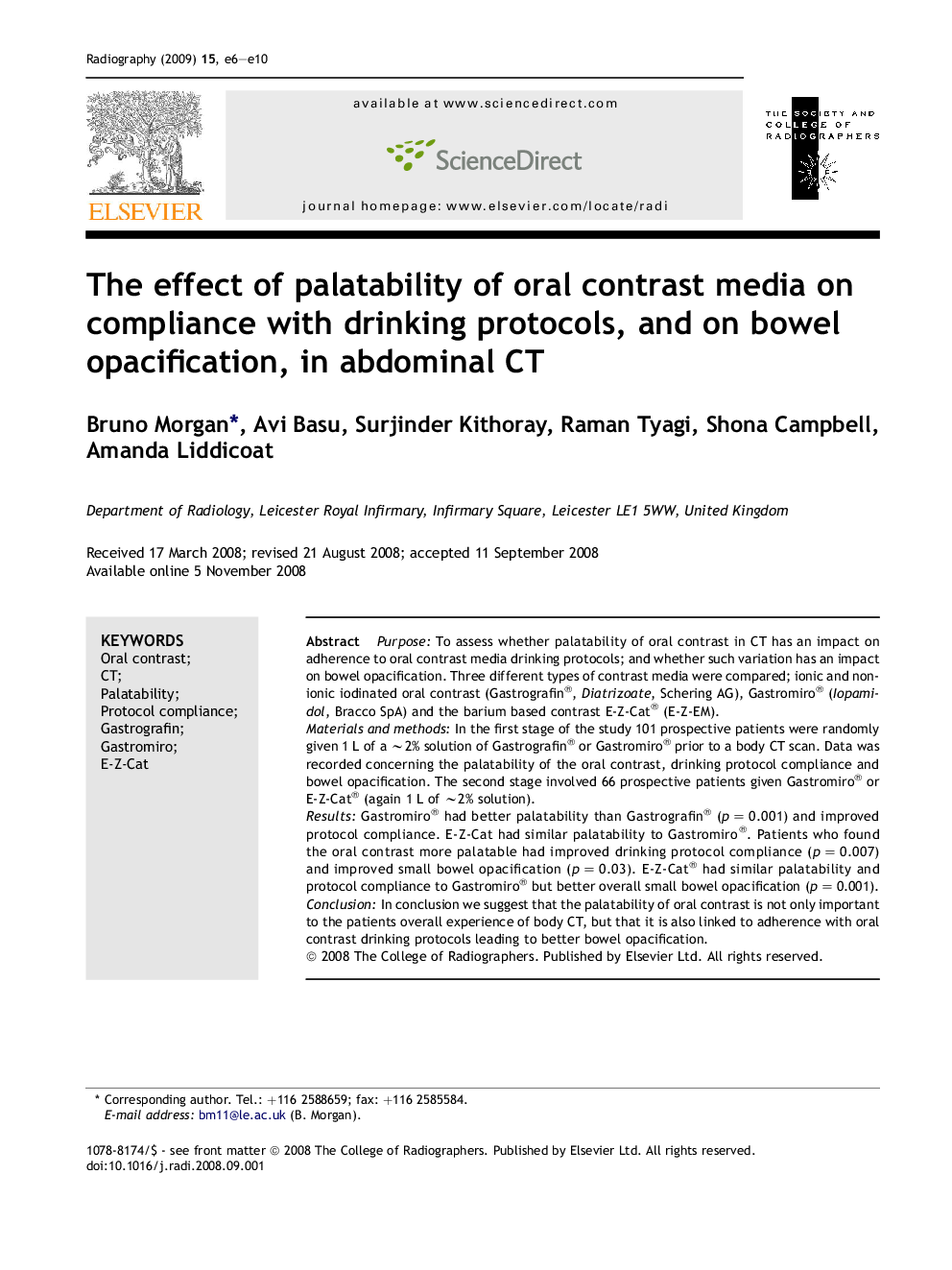| Article ID | Journal | Published Year | Pages | File Type |
|---|---|---|---|---|
| 2726476 | Radiography | 2009 | 5 Pages |
PurposeTo assess whether palatability of oral contrast in CT has an impact on adherence to oral contrast media drinking protocols; and whether such variation has an impact on bowel opacification. Three different types of contrast media were compared; ionic and non-ionic iodinated oral contrast (Gastrografin®, Diatrizoate, Schering AG), Gastromiro® (Iopamidol, Bracco SpA) and the barium based contrast E-Z-Cat® (E-Z-EM).Materials and methodsIn the first stage of the study 101 prospective patients were randomly given 1 L of a ∼2% solution of Gastrografin® or Gastromiro® prior to a body CT scan. Data was recorded concerning the palatability of the oral contrast, drinking protocol compliance and bowel opacification. The second stage involved 66 prospective patients given Gastromiro® or E-Z-Cat® (again 1 L of ∼2% solution).ResultsGastromiro® had better palatability than Gastrografin® (p = 0.001) and improved protocol compliance. E-Z-Cat had similar palatability to Gastromiro®. Patients who found the oral contrast more palatable had improved drinking protocol compliance (p = 0.007) and improved small bowel opacification (p = 0.03). E-Z-Cat® had similar palatability and protocol compliance to Gastromiro® but better overall small bowel opacification (p = 0.001).ConclusionIn conclusion we suggest that the palatability of oral contrast is not only important to the patients overall experience of body CT, but that it is also linked to adherence with oral contrast drinking protocols leading to better bowel opacification.
